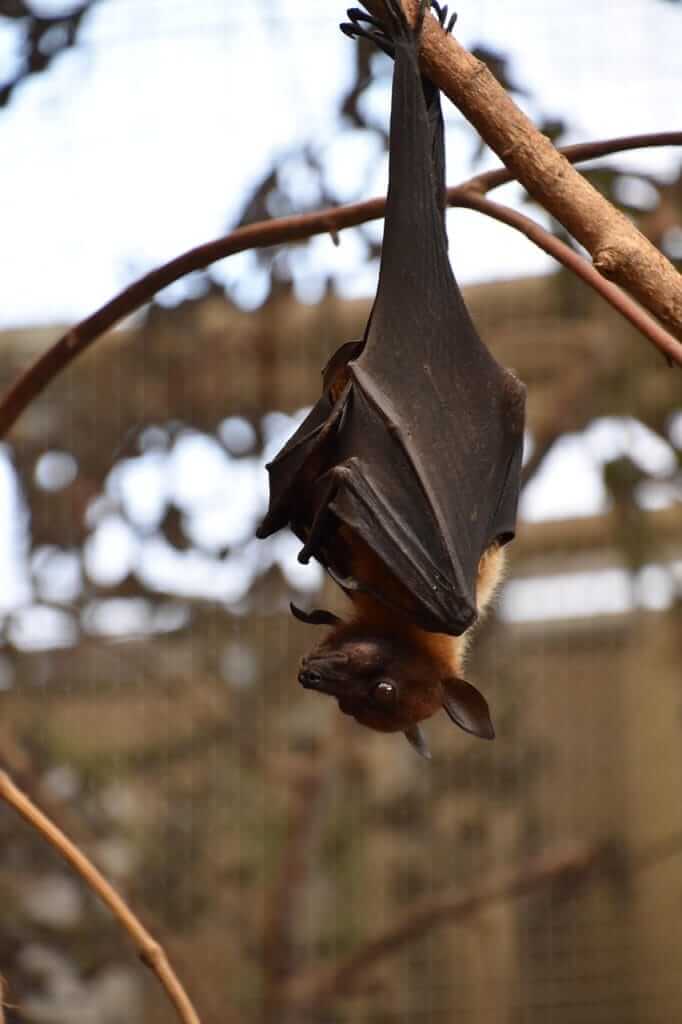
Everything you need to know about the rabies vaccine
The purpose of this chapter is to give you information about the rabies vaccine, especially about the vaccine that is given to people who are travelling, prior to exposure.
I will not be talking extensively about the rabies infection, which can be very severe. Instead, I will try to focus on information about the vaccine, for those who are unsure about whether they would like to receive it and when.
A few words about the rabies infection
This is a viral infection, that starts with exposure to the saliva (usually through a bite) of an animal that is a carrier and ends with a severe cerebral and often fatal infection.
Adequate vaccination, before or after exposure (as you will see below), prevents development of the disease in humans.
Where in the world is rabies common?
In Africa, Asia, central and south America.
Which animals are usually carriers?
Mainly bats, but also skunks, racoons, foxes, dogs, cats and cows.
In other words, theoretically, any mammal can carry the virus except for small rodents.
Does a bite have to occur for a person to get infected?
No. A scratch from an animal can also transmit the infection.
Contact with tissue or secretions that do not transmit the infection (fur, urine, stool, blood) or licking their intact skin does not transmit the infection.
Only a shallow injury or licking injured skin counts.
Note that following contact with a bat you should always consider seeking medical attention for consideration of treatment because sometimes a bat’s bite can go unnoticed.
How can you protect yourself from rabies?
Before we start talking about vaccines, we have to remind ourselves that there are ways in which we can be more cautious and protect ourselves from rabies, these include:
# Travellers should be warned about exposure to bats – bats are the vectors that transmit the most rabies. Therefore, travellers should be warned about the presence of bats in certain caves. Any exposure to bats should be followed by a clinic visit for a consult about whether vaccinations are necessary, even in countries where rabies vaccines are not recommended.
# When getting counselled about travelling, especially to hyperendemic areas such as India and China, travellers should be made aware of the modes of transmission of the disease and receive instructions on how to minimize exposure
# Animals should not be provoked – provoking means any type of behaviour that may lead to the animal having a response that would include a bite or a scratch, and this includes playing with the animal, feeding them or taking food away from them, walking around their living area, running or moving towards the animal, touching their offspring and more.
# Vaccines before and after exposure.
What kind of vaccines do we have against rabies?
This is an important part. Pay attention.
Active vaccine: this is given prior to exposure, but also after.
Passive vaccine: this is only given after exposure.
What are the differences between the active and passive vaccine?
Active vaccine – administration of an antigen that causes a response in the body. In other words, we inject protein to the body and the body produces antibodies against a specific pathogen in order to protect us from future exposures.
Passive vaccine – administration of antibodies whose purpose is to the protect the body. In other words, we collect antibodies from the blood of people who have already produced antibodies against rabies and inject these antibodies into the body of someone who was exposed to rabies.
So why do we need to get vaccinated prior to exposure if we can just receive the vaccine after exposure?
That’s a good question, the answer is easy. There are several main purposes to the vaccine that is given prior to exposure.
1. To cancel the need for a passive post-exposure vaccine in countries in the world where the passive vaccine is unavailable.
2. To reduce the number of doses of active vaccine required after exposure.
3. To protect against exposure to rabies that was not detected in time
I will cut to the chase and mention that in addition the rabies vaccine can vary in its quality depending on where you are in the world – the vaccine available in developing countries is different to the one available in developed countries. This is another reason why receiving the vaccine prior to exposure is better – receiving a “clean” vaccine that is more protective and has fewer side effects.
Are there people that need to receive the vaccine even if they are not travelling?
People who are exposed to animals or the virus should receive the vaccine, for example:
1. Veterinarians
2. Lab workers that are exposed to the virus
3. People that come in contact with animals that could be carriers
Who else needs to receive the vaccine prior to exposure?
Several different groups of people:
1. People who live in endemic countries for over a year
2. Backpack travellers to Asia, Africa and south America who plan on travelling (hiking) for over a month.
3. People travelling to endemic countries for any period of time, who may be exposed to animals as a result of the type of travel they plan or their occupation, such as cyclers, veterinarians, backpack travellers who plan on going into jungles or on treks.
4. People travelling to endemic countries for any period of time, where their travel plans include remote areas that will likely not have access to rabies post-exposure vaccines in official clinics.
How many doses of the pre-exposure vaccine do travellers need to receive?
In those with an intact immune system – 2 doses, at days 0 and 7 (at least 1 week apart).
People who are at risk of further exposure in the future, due to their travel plans, should receive a third dose, preferably no later than 3 years from their first dose (and no sooner that 21 days). The third dose can also be given more than 3 years after the first dose.
Three doses provide protection from rabies for life.
In those who are immune suppressed – 3 doses at days 0, 7 and 21. They will also need to receive more active and passive vaccines after exposure.
What do you mean by day 0, 7 and 21?
That’s a good question.
This is the minimum number of days allowed between doses.
When we say 0, 7 and 21 we mean that the first dose should be given on day 0 and the next one has to be at least 7 days after the first (note that it does not have to be exactly 1 week apart, it is simply the minimum number of days recommended between doses) and then at least 21 days after the first dose (and 14 days after the second).
How many doses need to be administered after exposure?
Keep in mind that the management after exposure includes both active and passive vaccines. The number of doses depends on the number of doses that were received prior to exposure.
Those who had already received the pre-exposure vaccine and are not immune suppressed need to receive 2 active doses at days 0 and 3.
In general, those who did not receive the pre-exposure vaccine will need to receive doses of the active vaccines at days 0, 3, 7 and 14. Immune suppressed people will need to receive an additional dose at day 28.
At the same time, those who did not receive the pre-exposure vaccine will also need to be injected with the passive vaccine at the site of the bite, as soon as possible.
What is the type of active vaccine available for rabies?
In western countries, the vaccine is cell derived and contains a virus inactivated in a cell culture or fertilized egg.
This virus is administered intramuscularly and is not given in the gluteus muscle.
In underdeveloped countries the vaccines are considered less immunogenic and may carry more side effects.
What are the side effects of the vaccine?
The adults among us recall these vaccines in a very negative way – long needles injected into the abdomen, with very bad side effects. None of that applies today.
The most common side effects are fever and tenderness at the site of injection.
I have been bitten by an animal in an endemic area – what should I do?
The area that was bit should first be cleaned thoroughly with water and soap for about 15 minutes. Afterwards, use 70% alcohol or iodine.
Note that especially if you are in an area that lacks modern medicine, do not compromise cleansing the injured skin area because this part is very important. Do it as soon as possible, but even if you haven’t done it very early, do it anyway.
This is a medical emergency. Go to the closest medical clinic and reach out to your healthcare provider at home, as well.
Any other things to look out for after a bite?
Yes. Read the chapter we have about animal bites and consider getting a tetanus vaccine and prophylactic antibiotics.
What about suturing the injury?
As a rule of thumb, an injury caused by an animal that is suspected to carry rabies should not be sutured until a decision has been made about passive vaccine (into the site of injection).
In summary, in the past when I used to work in the traveller’s clinic, the rabies vaccine was not administered routinely and was only given in the traveller’s clinic to people who were at very high risk (cave investigators). Today, the recommendations have changed and many of the travellers should really be getting their vaccine and getting protection.
I hope this chapter helps you make some decisions, hopefully prior to exposure.
For comments and questions, please register
